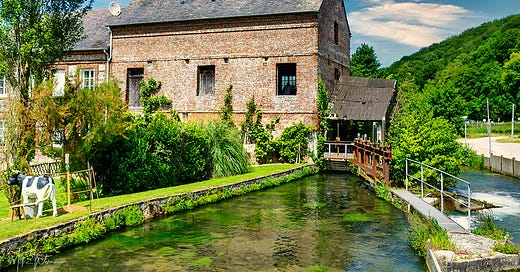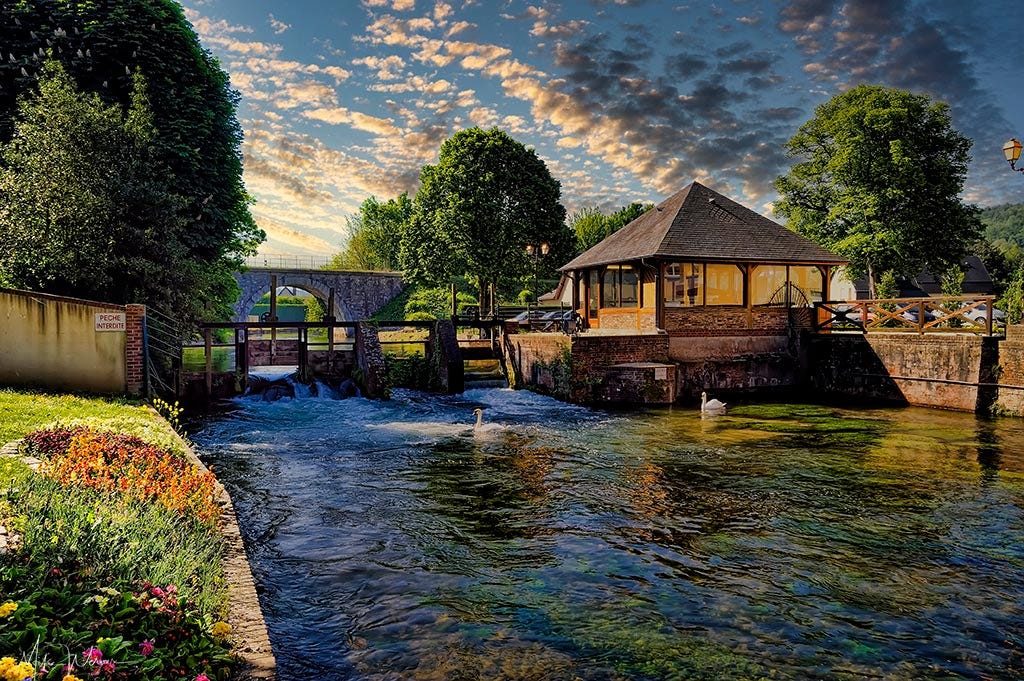Watermills have played a crucial role in the history of Upper Normandy, shaping both its economy and landscape. Benefiting from the region’s abundant rivers, such as the Seine, the Eure, and the Andelle, these mills harnessed the natural power of flowing water for various industrial and agricultural purposes. Dating back to the medieval period, watermills were primarily used for grinding grain into flour, providing a vital resource for local bakeries and communities. Over time, their applications expanded to support other industries, including textile production, paper manufacturing, and ironworks. The 18th and 19th centuries marked a peak in their development, as advancements in engineering improved efficiency, and Upper Normandy became a hub for high-quality textiles, notably in towns like Louviers and Elbeuf.
Despite the decline of traditional watermills with the advent of steam and electricity in the 19th and 20th centuries, many historic mills still dot the landscape of Upper Normandy, serving as reminders of the region’s industrial heritage. Some have been preserved as museums or repurposed into charming residences and guesthouses, offering visitors a glimpse into their historical significance. Others continue to operate on a smaller scale, contributing to local artisanal production. The picturesque settings of these mills, often nestled in lush valleys or along winding rivers, make them an integral part of the region’s cultural and natural heritage. Today, renewed interest in sustainable energy has also sparked efforts to rehabilitate old watermills for hydroelectric power, blending historical tradition with modern environmental consciousness.
The Durdent River and Valley
In the valley between Veulettes-sur-Mer and Héricourt-en-Caux flows the Durdent River, a small but fast-moving stream. Its strong current was once powerful enough to drive numerous water mills. Along the 24-kilometer stretch, a century ago, around 60 mills operated along the Durdent Valley, but today only 18 remain, none of which are functional. However, mill owners must still adhere to regulations concerning water levels and flow speed. As a result, you may occasionally see the mill wheels turning, even though they are no longer in use.
Moulin de Mautheville
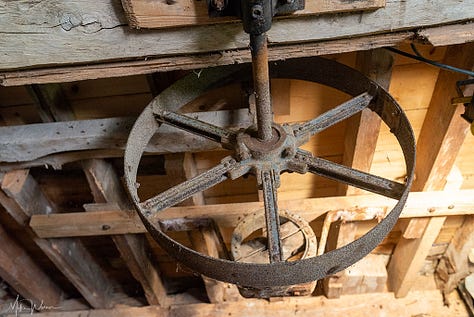
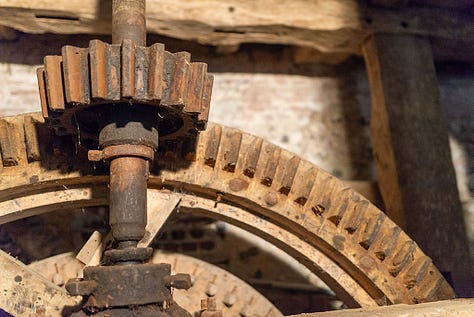
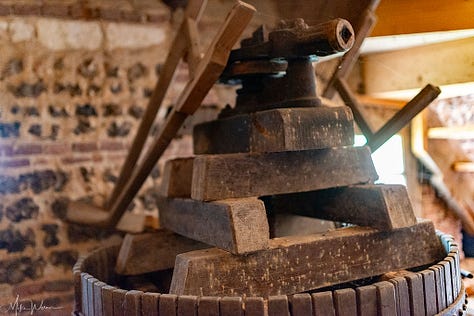
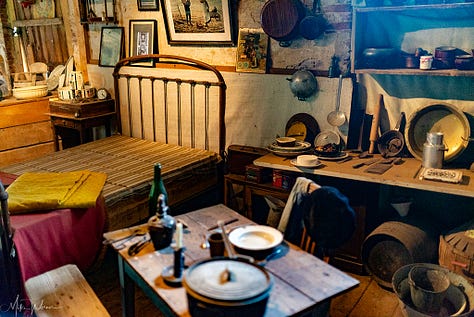
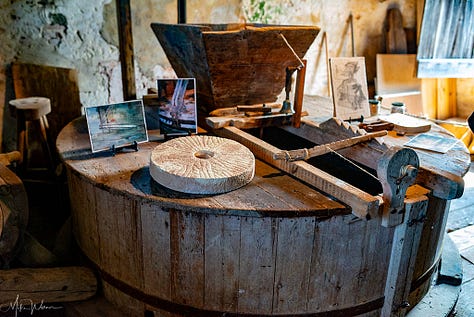
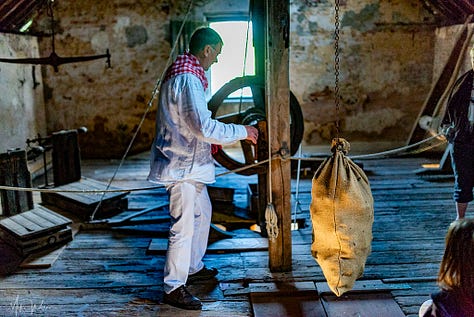
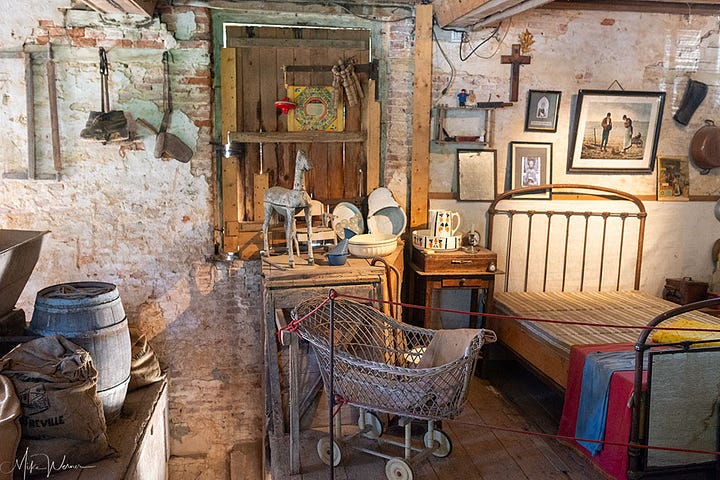
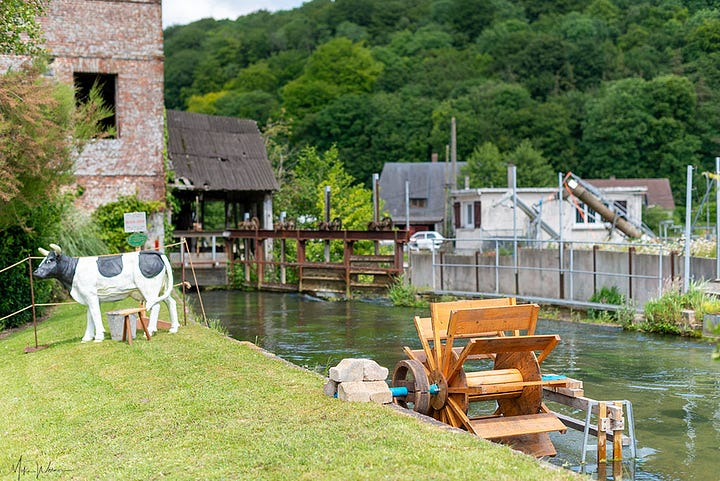
Le Moulin de Mautheville is a historic former mill located in Grainville-la-Teinturière, Normandy, France. This property has been transformed into a vacation home, offering guests a unique experience in a setting rich with history, but it used to be a museum. The house features three bedrooms, two bathrooms, a fully equipped kitchen, and a living room with a fireplace, providing modern comforts while retaining its historical charm. Guests can enjoy a large garden bordered by a river, creating a serene environment for relaxation.
The location of Le Moulin de Mautheville offers convenient access to various attractions in the region. It is situated approximately 37 kilometers from the cliffs of Étretat, a renowned natural site, and about 49 kilometers from Dieppe, a coastal town known for its maritime heritage. Additionally, the property is within a 10-minute drive from Lac de Caniel, which offers numerous recreational activities, and a 20-minute drive from the beaches of Saint-Valery-en-Caux, Veulettes-sur-Mer, and Les Petites Dalles. This makes it an ideal base for guests looking to explore the diverse landscapes and cultural sites of Normandy.
Click here to see where the watermill is located on Google Maps
The watermill is situated in the Durdent Valley, a picturesque area where the small river is lined with several historic watermills.
Moulin Vanneste
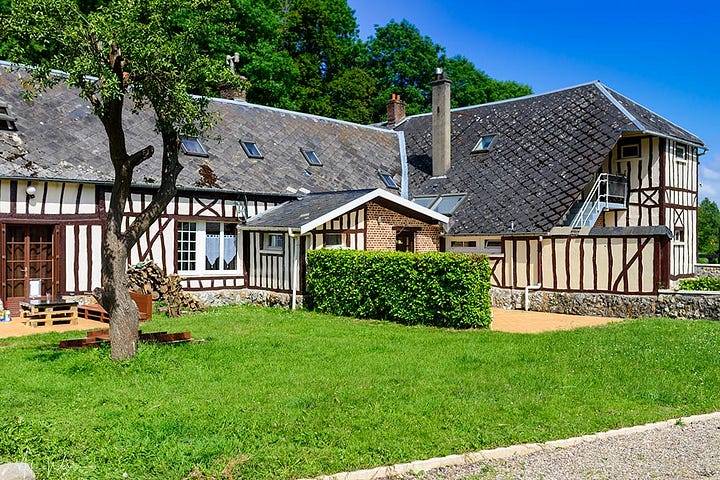
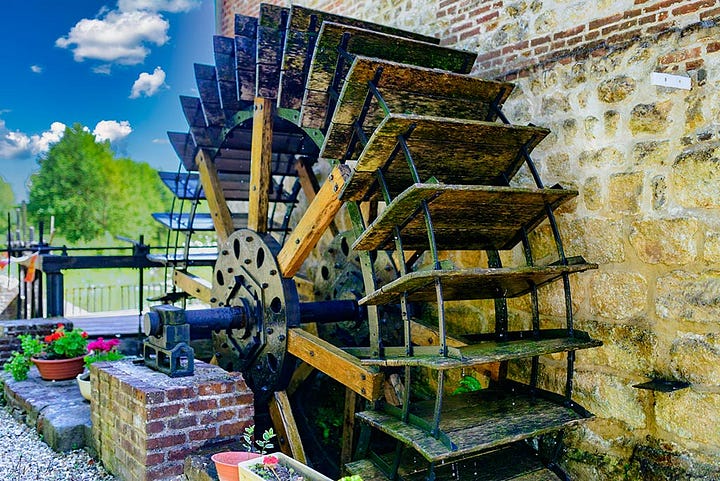
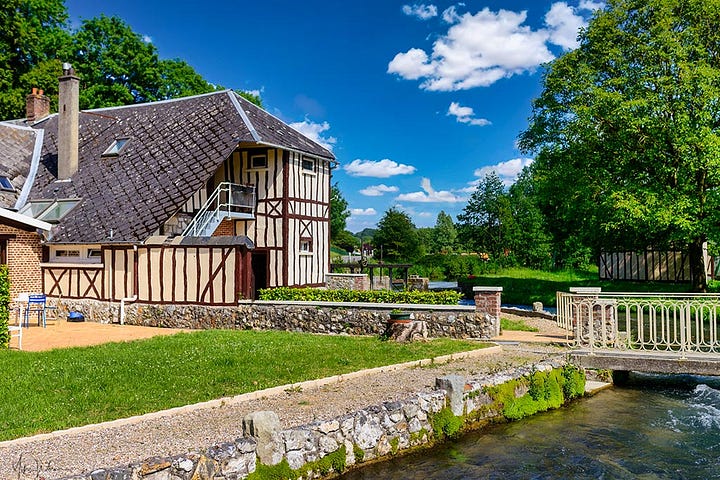
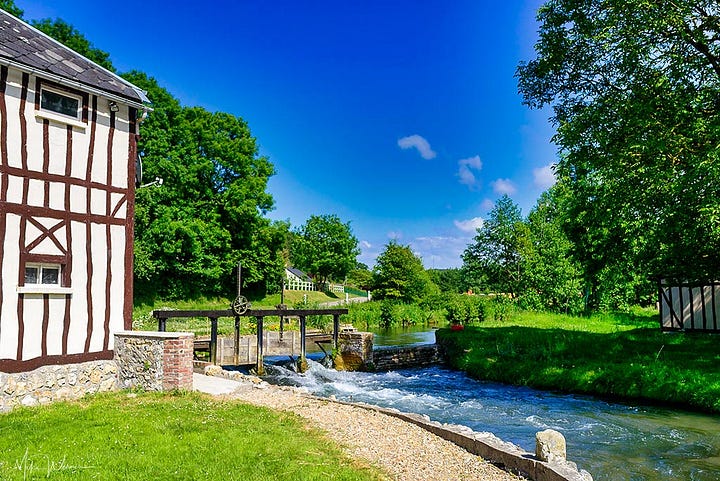
The Moulin Vanneste, situated a little bit further on the left bank of the Durdent River in Grainville-la-Teinturière, has a rich history that reflects the region's industrial evolution. Initially, it functioned as an oil mill. In the 1920s, the Belgian Debarre family transformed it into a flax scutching facility, employing traditional Flemish mills powered by the waterwheel. This setup allowed for efficient processing of flax, a significant crop in the area.
In 1934, ownership changed hands when Mr. Louis de Bouille sold the mill to Mr. Albert Vanneste. Under Vanneste's leadership, the mill expanded its operations, becoming the largest enterprise in the valley by 1936 and providing employment to nearly 50 individuals. However, in 1940, a devastating fire destroyed the buildings and machinery. Demonstrating resilience, the mill was reconstructed within the same year, allowing operations to resume promptly.
Post-reconstruction, the mill continued its flax processing activities. Around 1950, Mr. Vanneste introduced innovations by constructing concrete tanks for hot water retting—a process that facilitated the separation of fibers from the flax stalks. A prominent chimney, part of the boiler system, became a notable feature of the mill's landscape. Additionally, a new concrete structure was erected to house mechanical scutching equipment, modernizing the facility's operations. Despite these advancements, the mill ceased its flax scutching activities by the late 1950s, marking the end of an era in the local flax industry.
Today, the legacy of Moulin Vanneste serves as a testament to the industrial heritage of Grainville-la-Teinturière, reflecting the community's adaptation and resilience through changing economic landscapes.
The other mills
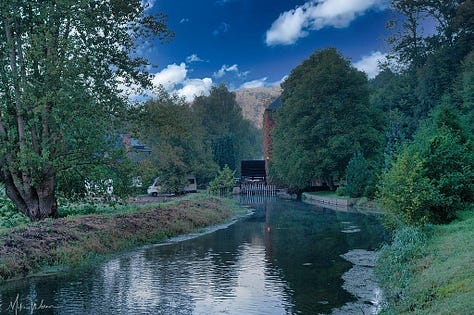
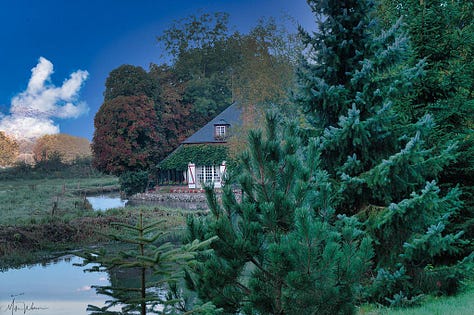
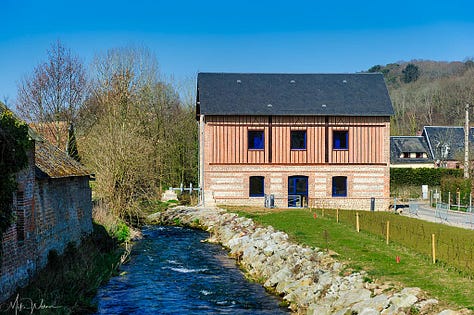
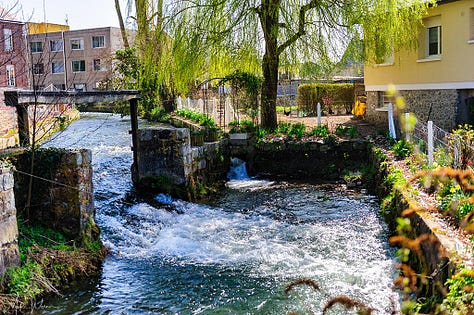

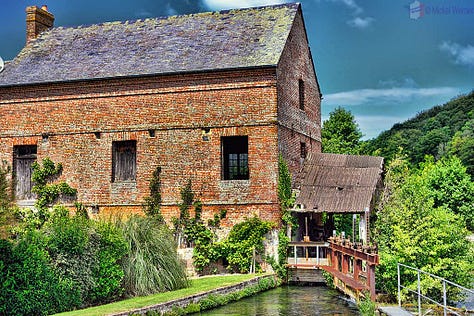
Along the Durdent River, you can find several other water mills. The most notable one is in Cany-Barville, where it still generates a small amount of electricity. However, its primary role today is more for demonstration than for practical energy production.
Several of these water mills are open to visitors on occasion. There is a national day dedicated to water mills, during which many of them open their doors to the public. The next event will take place on the weekend of May 17-18, 2025. Click here to visit the European Mills website and find out when the next open day will be.

